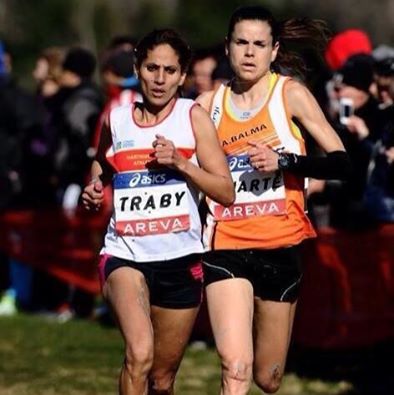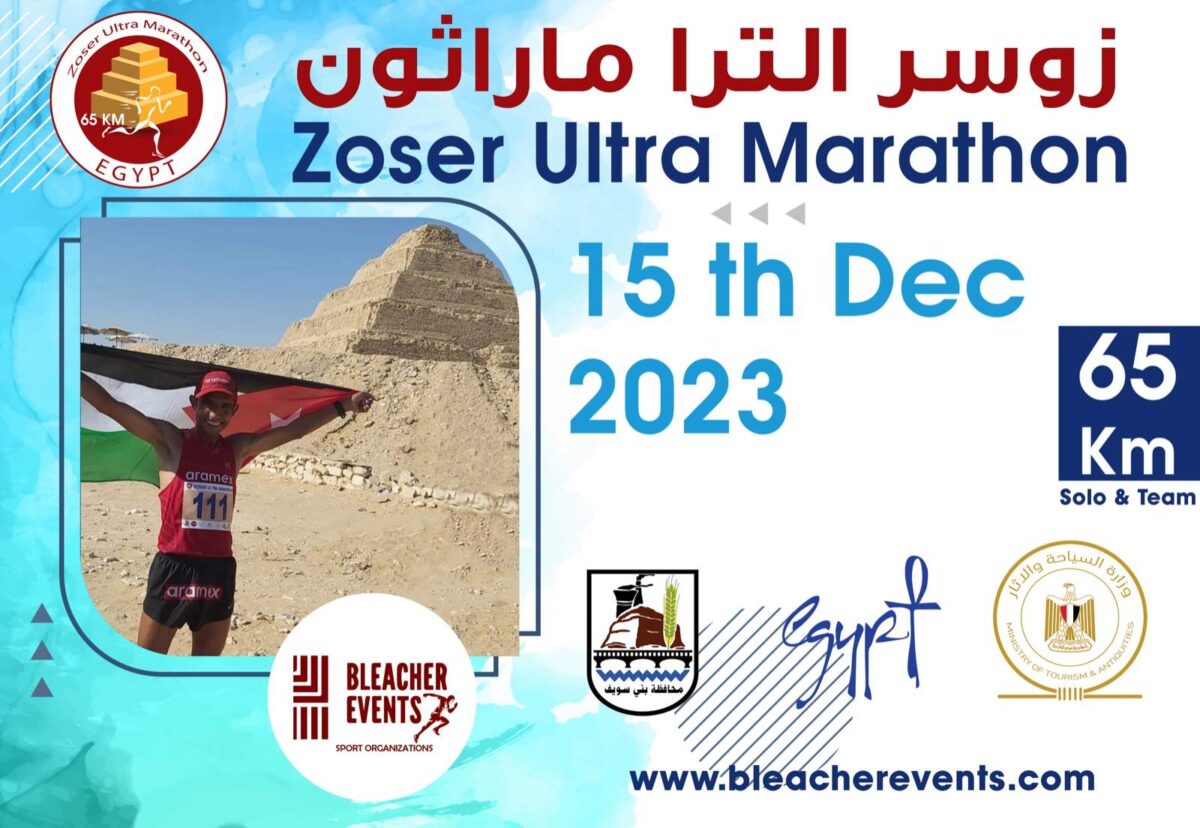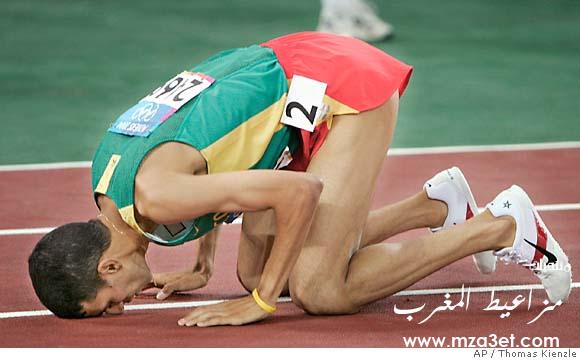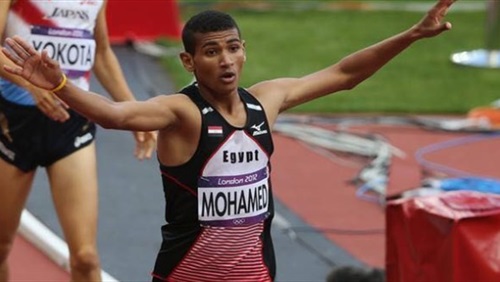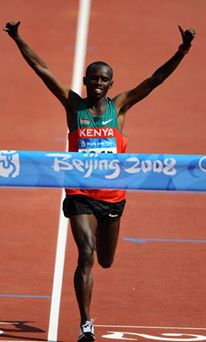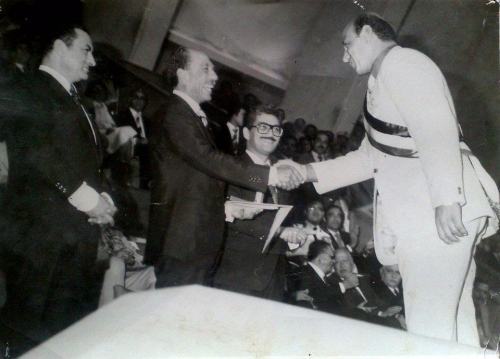In the name of Allah the Merciful /
In the name of God, the opening of all the best and the completion of every blessing / beginning. It must be clarified that this article, which is related to the concept of endurance of speed as the second pillar of the science of medium and long distance training, is a continuation of the opening research article, which we started in the second branch and underlined in the second article. Concerning the foundations of psychological and physiological preparation, but we chose to make that separate part in order not to be distracted and to add another distinct video for speed endurance exercises.
Then read the second article in full and we mean the foundations of physical and physiological preparation from the beginning.
This is followed by reading that article, which will be uploaded, God willing, at the appropriate time and until God decrees a matter that has been in effect.
Currently, we invite you to watch that attached video to learn how to perform speed endurance exercises in its most famous training style, which is the tembo run. Good viewing.
With your news that tembo run exercises – or fixed rhythm – are performed in two forms, one of them is a short pattern of 4 km to 10 km as a maximum, and a long pattern of 12 km – a minimum – and 21 km as a maximum, and that is in principle and finally we say that the player’s pulse should not increase during those exercises and immediately after about 90 percent of the maximum pulse and refer to the second article to learn how to measure the pulse, and of course the Next day will be a minimum of 40 minutes of relaxation or general endurance training of more than 45 minutes, depending on the player’s ability, and we will explain in the future the details of the different types of speed training In all respects, as we mentioned , it is followed by God’s help and preservation.
– Followed by God’s will and generosity –
In the name of God in the beginning and at the end / Due to the observation by the founder of the site and the organizers of the great pharaohs runners’ races during the past few days that there is a special interest in that important part of the science of training, which is speed endurance exercises, the pharaohs runners saw that it is worth raising the two parts of the tempo and fartlek training as one of the most important patterns. We invite the site’s visitors to carefully and carefully what they read and to comprehend its great importance. Enjoy watching the attached video, knowing that it has been modified with another international video of the same hero. Performing these exercises in the summer for that hero, and then no one goes into the water in the winter to loosen his muscles – and with a more enjoyable reading.
**Speed Endurance Drills main article**
In the name of God / the second pillar / speed endurance / speed endurance exercises are stored in the global training system
In an exceptional position, it is the key to success in winning middle-distance races and up to five kilometers in general, and the secret of excellence in races of ten thousand meters and even the marathon. The hero player and even the amateur player, and in order to give the readers a realistic example, we will tell you about something that is in fact a history that is told to the rising generations in sports or games, whether at the national, Arab or even international level, which is that the Egyptian marathon king / Captain / Mahmoud Abdel Karim, may God have mercy on him He was forgiven for his previous and later sins, when he traveled to Ethiopia to train with the hero Abebe Bikila in the sixties , he told us that the Ethiopian hero trained at that time for six days, five carrying a year, and on the sixth day he ran 35 km
At a high pace, approaching his pace in the marathon race, which is known as a tembo run or a steady organized rhythm, and the coach of the Ethiopian champion measured him every five kilometers separately, and in the event that he was slower or faster with an increase, he would tell him to maintain the required rhythm – and there is a secret he told us, which is The Olympic champion Abebe Bikila, may God have mercy on him, used to run every 5 km over the course of the thirty -five kilometers in about 10 seconds, 16 minutes to 20 seconds, 16 minutes – and by the end of the week he was taking the seventh day off, knowing that running the tempo was unknown to his scientific benefits on the body Abebe Bikila’s days, he performed spontaneously as a hard workout that benefits the runner
The speed endurance has several patterns, so there is the tempo or the fixed tempo – as it is called by some athletes and it is also known as the lactic limit training – and the fartlek ran for and mental strength, and the physical hills were running , and we will show them one by one /
1 – Lactic or LT training.
It is also called ‘ tembo run ‘. This training style achieves several benefits that benefit all middle and long distance runners and is of exceptional importance for anyone who aims to compete in the ten kilometer races and even the marathon.
The value of this training style is embodied in making the athlete able to run at a rate of between 80./.
to 95 ./. From the maximum level of oxygen – by which the athlete begins to burn the stores of carbohydrates in the muscle “and not the fat stored in the body”, in addition to the formation of lactic acid – or lactic acid – in the athlete’s body, which forces him to slow down and thus weak performance.
To be more clear, the maximum oxygen level is the maximum speed at which an athlete can run, during which he depends on periodically inhaled oxygen, in a way that ensures that he does not move from the stage of aerobic running to performance or non- aerobic running, which results in the speed of burning carbohydrates stored in the body, in addition to the formation of muscle lactic acid.
It must be clarified that the athlete cannot run in exercises according to the maximum oxygen level for more than five continuous minutes “with the possibility of performing repetitions” and he cannot run in competitions for more than eleven minutes according to the maximum oxygen level.
Referring to the lactate limit training to show the extent of its relationship to the maximum level of oxygen, “it must be stated that the athlete runs at the pace required to perform the lactic limit training, as it depends on generating the energy for running on the fat stored in the body,” which ensures the length of the outstanding performance period according to this method, as it increases the speed Exceeding the maximum level of oxygen, the body begins to generate the necessary energy from carbohydrates stored in the muscles in the form of glycogen, which is limited in nature and needs to be recharged – so to speak – and exceeding the prescribed speed helps in the formation of lactic acid quickly in the muscles as shown.
And training a steady rhythm tembo run has the advantage that by training it, you can run at a high speed in different races by up to 90 ./. More than your maximum speed in the aerobic training range.
And then the question arises what is the required rhythm and necessary to perform that training style and how to perform it.
– As for the required rhythm / Lactic limit training has two images /
1 – The short tembo pattern , which mostly ranges from 4 km to 10 km.
In which the athlete must run slower than his pace in the ten kilometer race by about fifteen seconds for every two kilometers’ example / an athlete has 30 minutes in the 10 km race as personal time. time worth
15 s ‘ 6 d for a total of 45 s ‘ 18 d in the 6 km.
And if the pace is fast for the trainee, he can increase up to an additional ten seconds or fifteen additional seconds over the required time, so that the required time, as compared to the last example, is 30 s’ 6 d
per 2 km, but he has to aspire to the target rhythm with regular training, where he gradually increases his speed.
2 – Long tembo / it ranges from 12 to 21 km.
Some world class athletes go beyond that, but it turns out that the most appropriate distances are within the aforementioned limits. The Olympic champion, the marathon silver medalist at the 2004 Athens Olympics, Mibe Kelvezgy, starts his training with a weekly run for that training style with a distance of eight miles and that distances to reach twelve miles – approximately 19 km – before dropping the load for the 2012 Olympic marathon final in London.
The appropriate pace for this training style is running at a pace thirty seconds slower than the personal time in the 10 km race. Example / a player who has 35 minutes in 10 km as personal time, runs every 2 km on 30 seconds 7 d for a total of 45 minutes if he performs Lactic Limit training
For a distance of 12 km “and in the long mode, it is not permissible to slow down from this pace to the target goal and the desired benefit achieve the training, where the athlete runs at a pulse rate of up to ninety percent of the maximum pulse” and at a rate of eighty-five percent of the maximum oxygen level.
– As for how he performs, this training is performed after building a good base of general endurance that enables you to run the usual long distance without exaggerated hardship, or as soon as the athlete sees that he is physically and mentally ready for this professional method of training.
To perform this training, it is performed weekly, preferably the day before the long distance jogging
Example of an athlete with a time of 35 minutes at 10 km / first week / lactic limit training for a distance of 4 km in 15 minutes’ second week / lactic limit training for a distance of 10-12 km in a time of 30′ 37 d
to 45 minutes ‘The lactic end exercise must be preceded by a healthy breakfast and two and a half hours later a good warm-up – as shown previously by the example of the warm-up before the race – and followed by – that is, the lactic limit training – the jock ran on the grass or on a non-solid floor for ten minutes and then light stretches’ This is followed by a meal that is high in protein and fresh milk.
And there is a video of the Olympic champion, the nose of the statement showing the optimal performance for the performance of tembo training in all aspects related to training, and it will be shown to us with God’s help.
There is a picture of the 2008 Beijing Olympic marathon champion/Kenyan runner/Samuel Kamo and Ansirwa, who is neutralizing the first picture in the animation gallery on the home page as he runs in the 2010 Chicago Marathon with one of the other Kenyan champions.
This is the best pattern for building a base of speed endurance that helps the athlete to run competitively with high efficiency and to assign him to bear the hardships of the race and to train the lactic end of a distinguished and high position in the science of physical training for long-distance running globally.
The training of the lactate limit, whether in the evening training on the same day or the next day, should be followed by a recreational or alternating an aerobic degree within 45 minutes, followed by stretches and a good Swedish, and the following training is the long distance training.
With the possibility that the next day of the lactic limit training, run the long distance and be at a moderate speed and with a pulse in the range of 75 to 80 percent of the maximum pulse.
2 – Fartlek / It is a Swedish word that means quick amusement.
In this training style, the athlete can raise the level of his speed load and increase the element of speed and physical and mental strength at the same time, as the method of performing fartlek training leads to that result. The question is / how to perform a training session for fartlek training.
Answer: First, the day before the fartlek training day, you should run in a recreational manner without getting tired.
Before knowing the method of performance, the secret of proper performance that achieves the desired results must be known.” The secret here is active positive rest. Between the repetitions that lead, you must run in a recreational way or a little faster, and not stop or walk, and here lies the difference between fartlek training and fast training intervals on the track, in which rest may be negative Or positive by walking Only in addition to the intensity in performing the same repetitions.
The intensity in fartlek training is 80 ./. to 90./. In the fast track intervals, it reaches 100 percent of the maximum pulse.
– The goal of the Fartlek is to develop the element of speed endurance, which is essential for long-distance runners
As for the quick intervals on the track, the development of strength and the maximum speed of the athlete is more important for those who run distances less than 5000 m because those distances depend in addition to the general endurance and the endurance of the speed to bear the force.
Fartlek training from its name, which means fast amusement, means that it does not have a specific shape, nor a specific distance that must be performed, or a specific time to perform its repetitions. The most important thing is active rest so that the heart rate remains relatively high even in positive rest between its repetitions.
Then, after running 3-4 km recreationally and without stopping, the athlete can start running multiple distances with the intensity indicated, provided that the rest is active, provided that the recreational running does not exceed the distance in terms of the distance of rapid repetition . Example / if you do 20 repetitions in 400 m
Every 400 m in a time of one minute and a quarter, for example, the rest is 400 m run at most, before performing the next repetition and followed by repetitions 3-4 km of recreational running. Then static stretches, that is, without vibratory movement when performed. This is followed by Swedish exercises.
And it is possible for an athlete to invent a training Fartlek and say that after the warm-up he will run to the end of the street
Then he will run 500 m to relax, then he will run 2 km to the restaurant, then he will be recreational like them, then he will run on the beginning of the bridge quickly, then the jock will run until reaching the bridge house, and here he has to take the house at high speed with his back straight and his head raised so that he resists gravity and it is not enough for his face if he balances it God forbid, “and then he runs 500m and then goes for a kilometer to find himself 2 km from his home or from the club, so he takes a moderate step until he arrives, and here the training ends and he can walk or run jock to calm down, then stretches and Swedish as we have shown.
– There are other exercises to perform fartlek training, the most famous of which is what was performed by the Egyptian marathon king, Captain / Mahmoud Abdel Karim.
Example 1 / Heat 15 minutes, then do 8 – 10 x repetitions at 1000 m. Run a fast km with an intensity of 85 percent of the maximum pulse, then run a km with an intensity of 60-75 percent of the maximum pulse and so on until you complete the repetitions, and then 15 minutes run at a moderate speed then I stop and walk and do stretches, then moderate , and light swede.
Example 2 / Warm up 15 minutes or 3 km, then perform 5 repetitions in 2000 m with intensity from 80 to 85 percent of the maximum pulse and rest 2000 m between each repetition and the last ‘ as the previous example at a reasonable speed and then finish by running 3 km at a moderate speed. Followed by stretches and swede .
It is possible to perform the first example / when you run the fast kilometer at the same pace as racing in the ten kilometer race or the half marathon if it is hard for you ‘and rest as it is’
As for the second example, the two km fast run at the pace of the half marathon race or the ten km race if possible, and rest as it is in the basic example.
And this exercise for Captain / Mahmoud Abdel Karim, “if you perform it once a week in exchange, you will find its results quickly, as your usual training and races will take place more quickly than you were doing before performing the training of the great champion or the training of the Fartlek in general.
The next day, she does a year’s endurance training, not the long distance she does at the end of the week.
If your usual endurance run is about 12 km, then run that distance ‘and if you are tired from fartlek training, then run 40 minutes of relaxation and then good stretches’ and Swedish as you can.
There is a question that arises in the mind of the reader about how to reconcile the two styles so that each of them performs regularly on a weekly basis, and we tell him that if he trains five days a week or more, the following answer is / example / the first day of Saturday / general endurance training, the usual distance with moderate effort
Sunday / Fartlek training as shown above.
Monday / leisure
Tuesday / General endurance training or positive rest. We mean walking, leisure, swimming or cycling.
Wednesday / tempo training The short pattern week and the long pattern week respectively.
Thursday / As for the long general endurance run – the long distance run -, and in case of fatigue from the previous day, you should have a rest period of at least 40 minutes, or a positive rest.
Friday / for those who ran the long distance Thursday, a negative rest is possible, and we mean that he relieves his body from any physical activity in excess of the normal, the end of which is to fulfill his family and social obligations without staying up late in any way. As for the last hypothesis, it was a recreational one.
In the end, stretching should be done on all days and the Swede, without overdoing it, especially the Swede immediately after hard training.
As for nutrition (see Nutrition section), the most important thing is to be hydrated.
And wait for us to reveal the most important secret to successfully performing marathons and half marathons.
Finally, we point out that all of these articles are free of charge, and everyone can benefit from them inside and outside Egypt.
As for trading in it by selling it or using it in specialized research without indicating its source, in both cases it is considered a violation of established intellectual property rights, and the beneficiary of its provisions is the great pharaohs and other publishers of scientific materials.
Followed by God’s help and protection…
– In the name of God, the Most Gracious, the Most Merciful / Fadlallah followed / here is the most important training pattern in a system of endurance exercises, which is training hills or heights. We have put for the visitors a global video of the best images of altitude training that can be performed, especially for players from 800m to 5000m, and for all distances of course, which was performed by the world champion / Sebastian Coe, the legend of middle distances, at the end of the seventies and early eighties.
In a video related to his life story / called / born to run, and it was placed in the video library, – and it is currently ranked second from the top in the aforementioned library – in order to achieve greater viewing of it.
But you must read the topic of running the hills first before watching it, and of course the articles that precede that, from the beginning until reaching that stage of explaining the best patterns of speed training, for a proper understanding and to make the best possible use of the articles.
3 – Running the hills / which is the key to successfully running the half marathon and marathon.
Running on the hills protects you from injuries, as it strengthens the quadriceps muscle, which does not work well when running on flat surfaces, in addition to increasing the strength of the back and calf muscles – meaning the calves – if they push the body forward to resist the gravity caused by the slope and slope of the hill.
It is also the best way to develop speed and strength in the first place, and endurance speed as well, according to the method of performing that training session. The hill run is the most appropriate way to develop the speed of a young talented runner without burning him and exhausting his energy through strenuous speed exercises on the track.
The slope of the slope must not be less than five percent for the beneficial effect , and it can reach eight percent or more, even if the slope slope within those limits is suitable for speed and endurance training, and the majority of natural and artificial heights Within those limits are suitable, and if it is possible to run on the heights of a degree Its incline reaches twelve percent and even fifteen percent, as is available in some electric stationary treadmills.
But what are the forms of training at heights that make the best use of the various aspects?
-There is a simple training method to develop both skin and strength, which was trained by theEgyptian marathon king Mahmoud Abdel Karim / which is a high, long choice as much as available and the degree of inclination is good within the above-mentioned limits. After running 15 minutes on flat ground, the athlete climbs on the hill with the same speed as he is running then he goes back down, but on the slope he releases his legs and relaxes and takes advantage of gravity. And he does this about thirty times if he can go up and down, and when going up he has to lean forward with his panicked forward a little, and if he is facing strong wind against him, he has to move his arms a little faster . And in landing he has to straighten his back and be straight And his head is lofty, as it may be said, when landing in a vertical position, and after the end of the run on the hill, it runs 2-3 km on flat ground in a recreational manner,
And if the training was intense according to the previous one, the athlete, if he was at the beginning of the sports season or at the beginning of preparation for a race after a period of time, can do the same warm-up, but perform ten repetitions of ascent and descent, followed by a 3 km run on flat ground, provided that he increases that distance every week by two repetitions on average.
It is possible to perform the same exercise as before, but the climb is quick at the same pace set in the ten-kilometre race and with the development of the level with the pace of the five-kilometre race, and the descent is relaxed without accelerating on the slope and then return quickly with self-regulation always and no tension and moving the feet, hands and shoulders smoothly and smoothly with Raising the thighs high in this particular training style, the goal is to increase the speed load and train in the conditions of the race.
There are different training styles in which attention is paid to the speed of the feet reverberating on the ground and not the length of the step by raising the thighs, and the aim is to develop speed and strength in the first place.
Among the most important training patterns, relatively short distances of 100-400 meters were run at a high speed of up to ninety percent of the maximum pulse, and the focus here is on the frequency of the foot without the length of the step range to increase the benefit from the height in the development of speed and strength. ‘The good high here is with a slope of eight to nine percent’ with the necessity of a good warm-up before performing those fast repetitions – as is the case with warming up the race – to be followed by those quick repetitions, which will range from ten repetitions to thirty repetitions or more depending on the level Run from 3 – 5 km on a lawn or flat ground with a comfortable step to loosen the muscles and then do a Swedish work only without lengthening.
(And the Olympic champion / Sebastian Coe, applied a method close to – and not identical to him – from that training session and that is contained in the video in the video library previously referred to, and we mean the training in which he was climbing at a good speed on an average distance slope, probably less than 400 m, with a steep incline, then back to a relaxed descent, and tumbled upwards again, for many repetitions) Of course before that exercise was a good warm-up and then I took a rest, as we explained a lot earlier.
-. The day following the previous speed training ‘in which there was a leisure time of at least 45 minutes, followed by various stretches and Swedish for a period of at least 30 minutes.’ With interest in drinking water and compensating for the lost.
– One of the training patterns is to make a training session at various heights, for example, you choose a high or the beginning of a long bridge such as – Al-Fardan Bridge in Ismailia, which is 4 km away, but you should not run over that bridge specifically at the present time for security considerations – or a mountain like the Mokattam mountain in Cairo to train on it and you do one repetition of the distances The next 200m’ 400m’ 800m’ 1200m’ 2000m’ 3000m As for the required pace, when the first two distances (200 and 400 metres) are run, they are run at the pace of competition in the 3000m race or faster if possible.
As for the distances (800 m ‘1000 m if performed ‘ 1200 m), they are run at the pace of competition in the 5000 m race, and for my distance (2000 m) 3000 m, the pace of racing in the 10,000 m Race, and the rest is in the back down by running in a relaxed manner without accelerating on the slope Or trying to slow down deliberately ‘with an anxious leaning forward a little when going up and straightening the back when going down’ and of course running to warm up before going up 3-4 km and the same distance after finishing as a calm down.
Assuming that the athlete who performs these repetitions is a distinguished champion, he must perform two or more sets, starting from the short distance to the long distance and returning to the short distance again, for example / performs 200, 400, 800, 1000, 2000, 3000m, then 2000m, 1000m, 800m, 400 and 200m Thus, rest is the descent of the same distance of ascent and return quickly on the height of the next distance in the rhythm indicated in advance, with raising the thighs in this training style.
– We must point out to the distinguished champions, especially the middle distance champions, that the British world champion, Sebastian Coe, performed world-class altitude training before the Olympic Games in London. Two minutes, which is not his maximum intensity, with a little rest of exactly one minute
And that exercise is contained in the video above, which is related to the hero / Sebastian Coe, and is available, God willing, in the video library.
Note: The athlete can include the height training in place of the fartlek training on the day designated for the latter, provided that the athlete performs the hill training – ie the heights – for a week, and then returns the following week to perform the fartlek training, and so forth, provided that the next day is always either for leisure or a general endurance was carried out, but not like the long training at the end of the week in which the player runs approximately twice the distance that he usually runs, For example / a person usually runs 12 km, so the distance for long running at the end of the week is from 16 km to 24 km, in order not to be tired Sports, and good luck.
Finally, a good warm-up must always be done before training on the heights, with recreational running after the training session, for no less than ten minutes in any case, with interest in drinking sufficient fluids before and after training – and during training if Possible, but with an interval of 15 minutes between each dose of water and another without too much and this rule Concerning drinking while and during training only – with attention to healthy nutrition that is high in proteins and carbohydrates and low in fats, especially animal ones .
The third pillar / speed drills.
With it, the athlete is able to reach the top of physical performance, or what is known in the vernacular language as the form of ‘ followed by God’s permission, help and will. ‘


